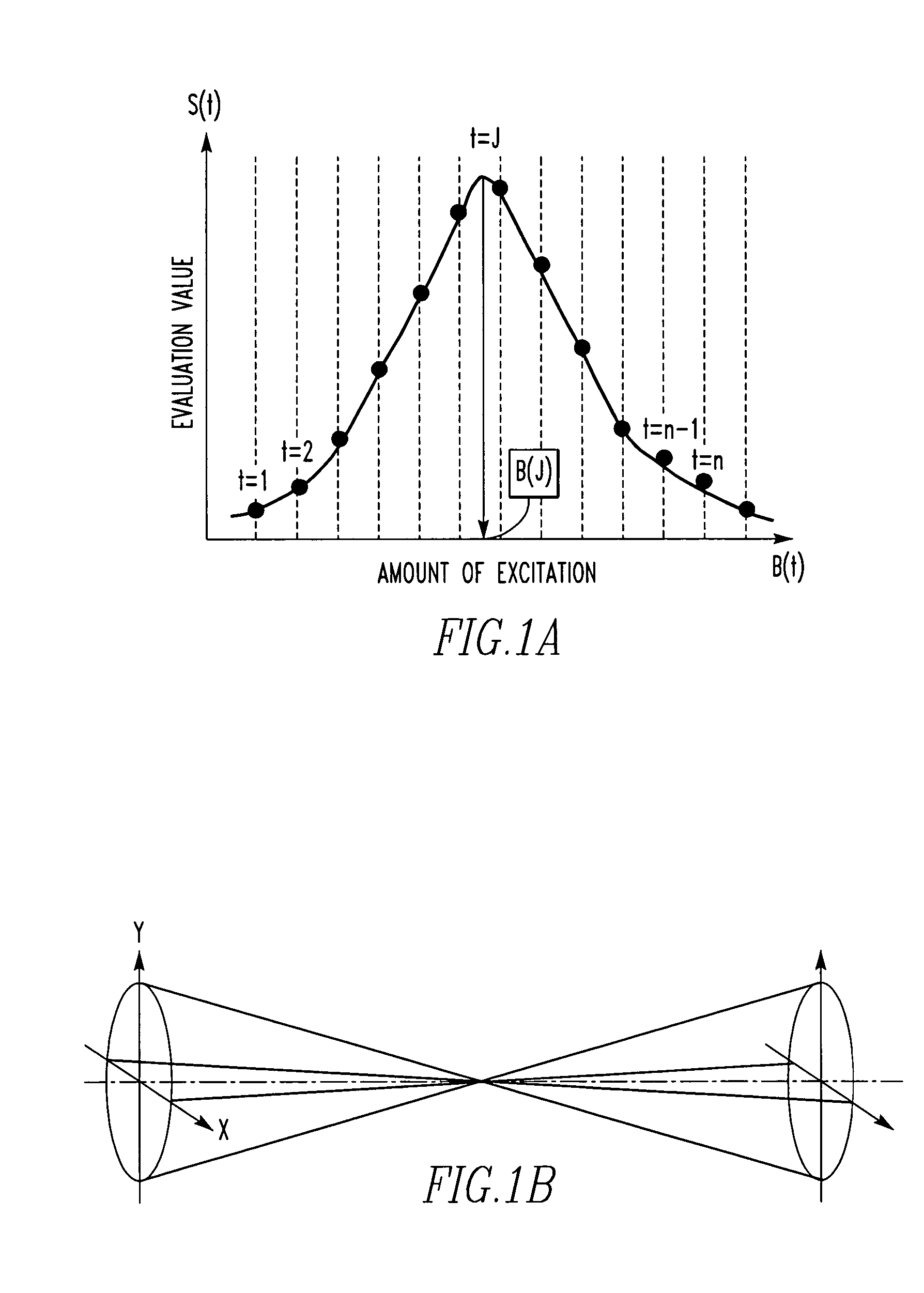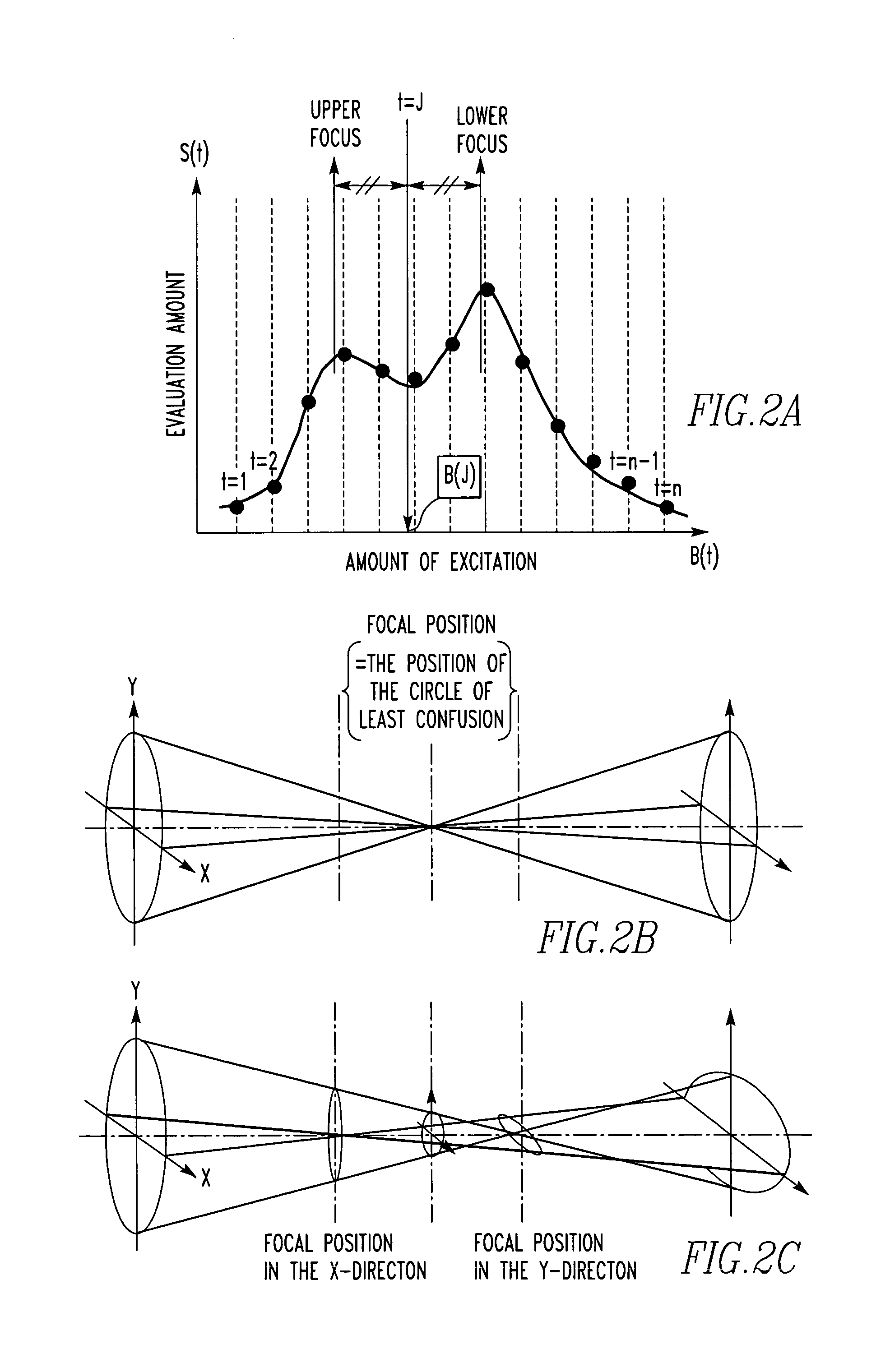Automatic methods for focus and astigmatism corrections in charged-particle beam instrument
a scanning charged particle and beam instrument technology, applied in the direction of instruments, heat measurement, photomechanical equipment, etc., can solve the problems of difficult to distinguish the two peaks, difficult to determine the focus, and difficult to make such a judgmen
- Summary
- Abstract
- Description
- Claims
- Application Information
AI Technical Summary
Benefits of technology
Problems solved by technology
Method used
Image
Examples
Embodiment Construction
[0055]The preferred embodiments of the present invention are hereinafter described in detail with reference to the accompanying drawings. FIG. 4 shows a scanning electron microscope for implementing the present invention.
[0056]The microscope has an electron gun (not shown) emitting an electron beam 1. The beam 1 is sharply focused onto a specimen 3 to be observed, using a condenser lens (not shown) and an objective lens 2. The strength of the electron beam 1, or beam current, is adjusted by the condenser lens (not shown) and an objective lens aperture.
[0057]After the strength of the electron beam 1 has been adjusted, the beam is scanned in two dimensions over the specimen 3 by two stages of deflection coil assemblies 4 and 5. Each of the upper-stage deflection coil assembly 4 and lower-stage deflection coil assembly 5 has horizontal and vertical deflection coils. A vertical scanning signal is supplied to the vertical deflection coil of the upper-stage deflection coil assembly 4 from...
PUM
| Property | Measurement | Unit |
|---|---|---|
| angle | aaaaa | aaaaa |
| strength | aaaaa | aaaaa |
| area | aaaaa | aaaaa |
Abstract
Description
Claims
Application Information
 Login to View More
Login to View More - R&D
- Intellectual Property
- Life Sciences
- Materials
- Tech Scout
- Unparalleled Data Quality
- Higher Quality Content
- 60% Fewer Hallucinations
Browse by: Latest US Patents, China's latest patents, Technical Efficacy Thesaurus, Application Domain, Technology Topic, Popular Technical Reports.
© 2025 PatSnap. All rights reserved.Legal|Privacy policy|Modern Slavery Act Transparency Statement|Sitemap|About US| Contact US: help@patsnap.com



